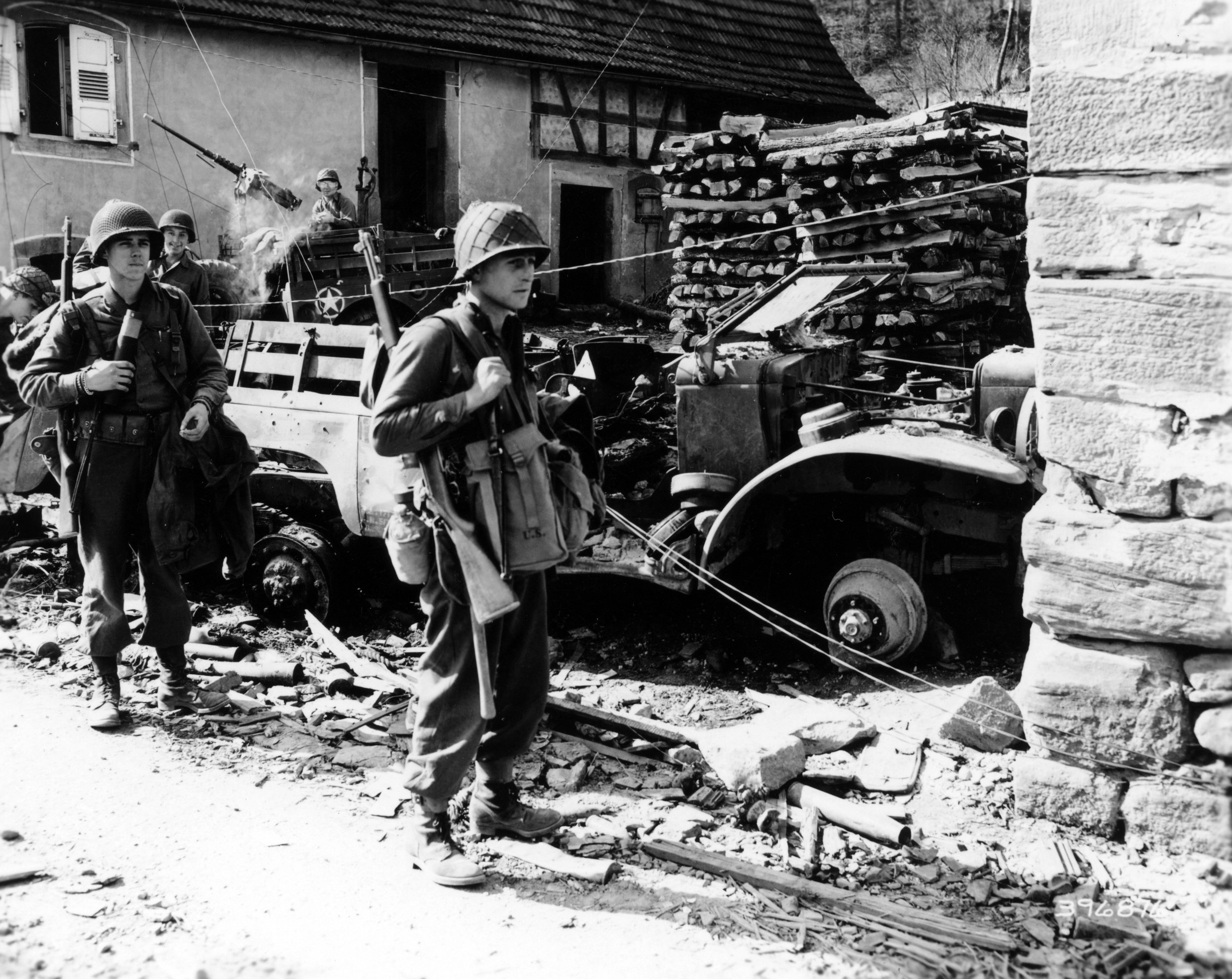
Combat and After-Action Reports
For the 103rd Infantry Division, combat and after-action reports were some of the most important documents that were created during the war. Combat reports were normally compiled from various sources, including eye-witness accounts of officers and the unit journals of each unit. These sources were compiled into narrative reports of combat on either a daily, monthly, or operational basis. The combat reports described, in exacting detail, the events of each engagement between the men of the 103rd. Combat reports also detailed which units in the division worked together and exactly where each engagement took place using map coordinates to explain the location of men of the 103rd. The combat reports were also important for the military intelligence and headquarters section of the 103rd because they would often describe or identify the enemy units. This information was vital to predicting enemy strength and logistical items.
The after-action reports were designed to help the officers and men of the 103rd review the positives and negatives of each battle. By looking back and evaluating what was successful and what could be improved upon, units were able to learn both from their mistakes, as well as the successful tactics from elsewhere in the division that could be implemented to increase survivability. The after-action reports were also designed so the division commander could identify how each unit had either advanced or retreated for the period covered in the report, and why progress or failure to advance occurred.
-

409th Infantry Regiment
-

410th Infantry Regiment
-

411th Infantry Regiment
Photo Credits: Stubenrauch, SC 396876- Two weary 7th U.S. Army men halt for a break by burnt out weapons carrier in Reipertswiller, during 42nd Infantry Division push through Domaniale Forest. 16 March, 1945. U.S. Army Signal Corps Archive via Flickr.
409th Infantry Regiment photo: T/4 Irving Leibowitz, SC 337382- Here an enemy machine gun opens up from the far side of the valley. Both men watch intently trying to spot it. (409th Infantry Regiment). German/Austrian border. 1 May, 1945 U.S. Army Signal Corps Archive via Flickr.
410th Infantry Regiment photo: T/4 Clifford O. Bell, SC 270822- Infantrymen of the 79th Division file into columns down street of newly-captured town of Soufflenheim, France. 13 December, 1944. U.S. Army Signal Corps Archive via Flickr.
411th Infantry Regiment photo: T/5 Joseph A. Bowen, SC 270629- 7th U.S. Army Infantrymen of the 7th Inf. Regt. (3rd Infantry Division) prepare to rush a house in which Nazi snipers are hidden. Guiderkirch, France. 15 March, 1945. U.S. Army Signal Corps Archive via Flickr.